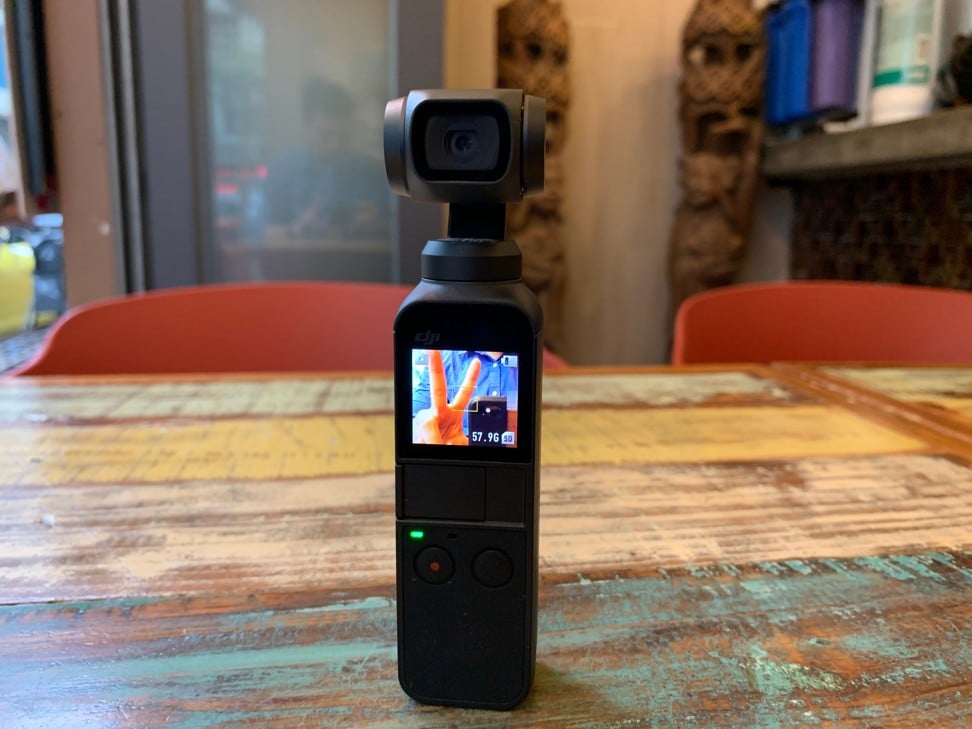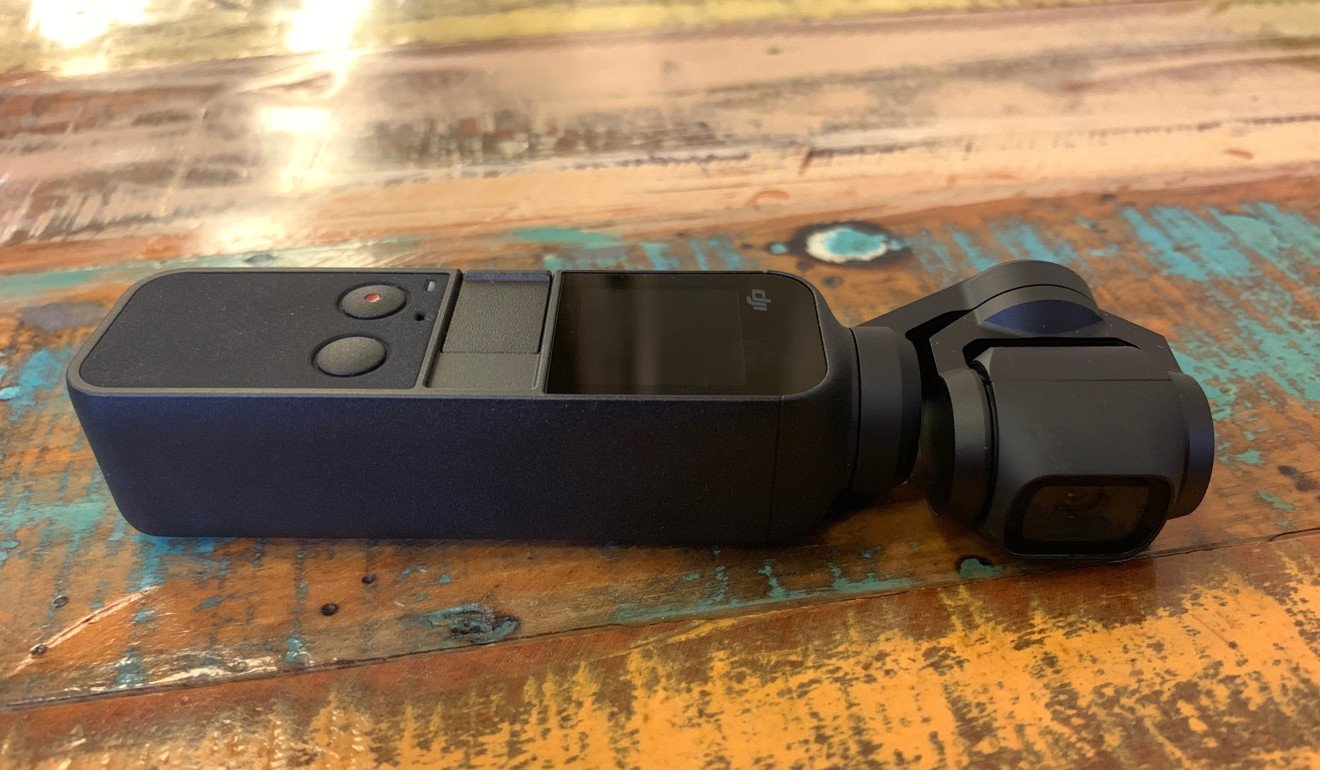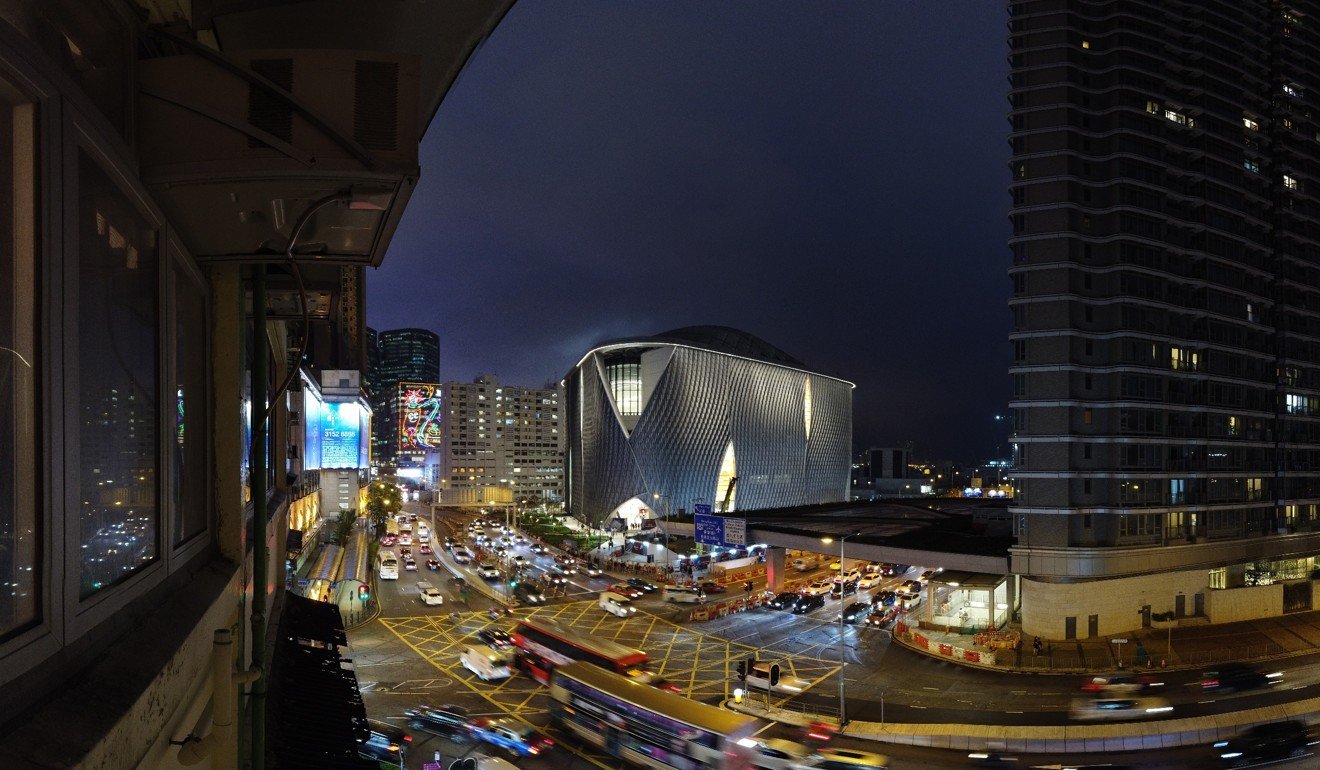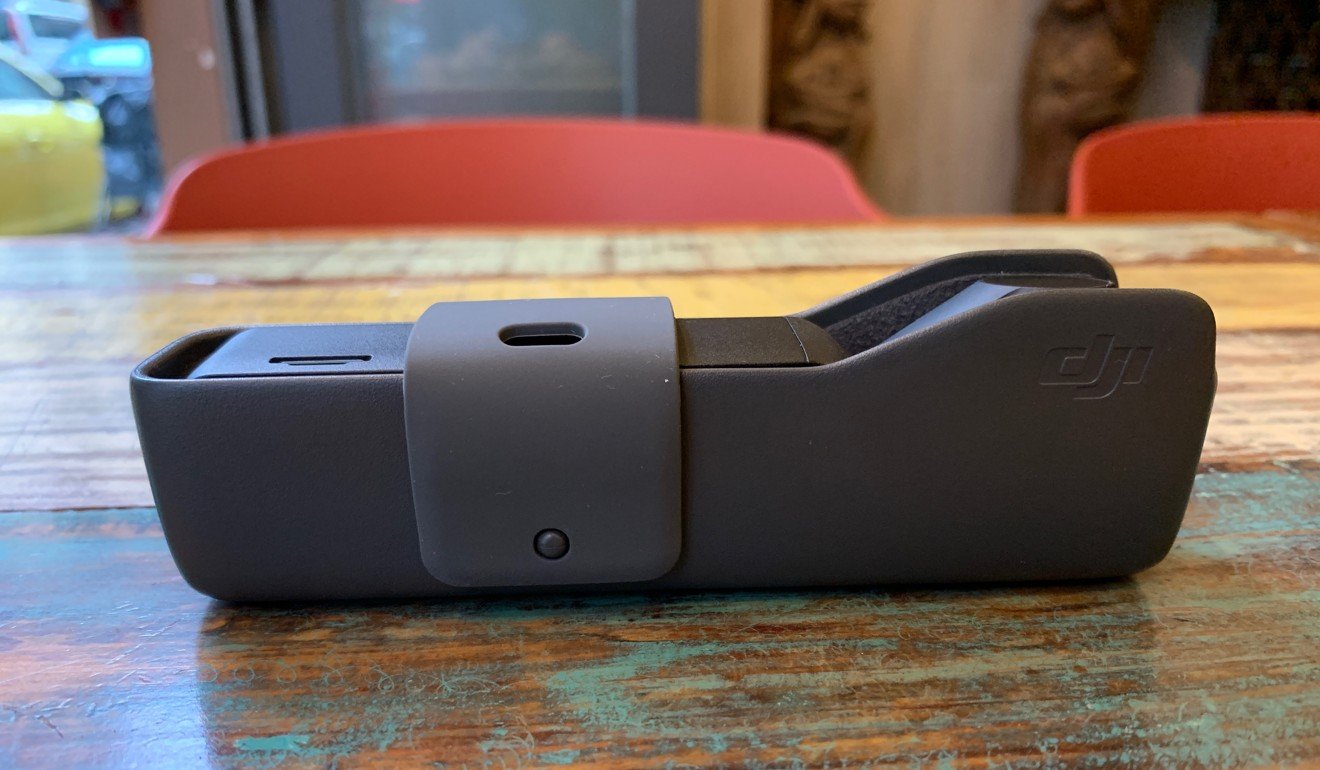
Review | DJI Osmo Pocket handheld camera: the tiny package that takes super steady 4K video
- The DJI Osmo Pocket can lock onto and track a face or object even when it is moving
- However, it relies heavily on add-ons, even for basic functionality
Best known for its civilian drones and gimbals – a motorised support system that helps cameras record smooth, stabilised videos – DJI’s latest product is a blend of both.
The Osmo Pocket cannot fly, but it takes the camera system from the DJI Mavic drone and places it on top of a mini three-axis gimbal, making for a highly portable – perhaps even the world’s smallest – handheld camera that can shoot high resolution, smooth videos.
Dual screen phone that’s notch-free – Nubia X first look
Design and hardware
As advertised, the Osmo Pocket is petite, standing just 122mm (less than five inches) tall and weighing 116g. Even when inside the included soft plastic cover case, the entire device is small enough to fit into trouser pockets.
The camera head features a 12 megapixel, f/2.0 camera lens that can record video at up to 4K, 60fps, and it sits on top of a triple-axis motor – tilt, roll, and pan – gimbal system that keeps the lens in a constant “floating” state.

Below the motors is a one-inch touch screen, a connector port that can adapt a host of accessories, a couple of hardware buttons, and a Micro-SD card slot (it has no internal storage). The entire device is made of plastic, so it’s not the most premium feeling device, but it’s sturdy enough. Inside the plastic casing is a non-removable 875 mAh battery.
It is not waterproof; an extra accessory – a case – is needed to take it underwater.

Software and features
The DJI Osmo Pocket can be used by itself, as the touch screen and buttons are enough to make use of most of the features. Using it this way is very simple: power on, tap the button to choose between photo or video mode, swipe through the screen to adjust settings such as resolution or fps, and hit the red button to shoot.
Play Fortnite, PUBG better with Xiaomi’s Black Shark gaming phone
The camera can automatically track the user’s face if they’re using it selfie style. If the camera is pointed away, the user the can double tap on the screen to lock onto an object and the camera will track it. Even if it’s a moving object, the camera head will move and follow it until it’s too far out of frame.
During testing, I was very impressed by the tracking. Whether it’s my face or a moving car, the Pocket was able to find, lock onto it and track almost immediately.

Another way to use the Pocket is to plug it into a smartphone – the device has detachable connectors for Lightning or USB-C included – and once connected, the smartphone’s screen becomes the viewfinder, allowing the user to get a much larger view of what they’re shooting.
When connected this way, more shooting features and setting options open up, including a Story Mode that automatically splices footage shot throughout the day, with background music and zooms and cuts for a daily montage.
I found that mode to be a gimmick, so I very rarely felt the need to connect the Pocket to a phone, as it’s much more portable in stand-alone form.

Performance and battery life
The Pocket’s ultra portability and ease of use would mean nothing without clean, crisp, and stabilised footage, and I’m happy to report the Pocket delivers. The gimbal motors do a great job of keeping videos smooth even when I ran full speed.
Given the Pocket’s relatively affordable price and small size, it wouldn’t be fair to compare its video/photo footage against a DSLR or even mirrorless camera, so I pitted the Pocket against the iPhone XS, probably the best video camera and one of the top three still cameras in smartphones today. In the video samples, you can see the Pocket was able to capture stabilised footage even when I was running full speed on going downstairs.

As a still camera, the Pocket is solid, but you are probably better off just shooting with your smartphone if you have a flagship from 2018, as the Pocket’s sensors do not gather as much light and cannot focus on objects that are too close. There are some useful shooting modes, such as its 3x3 panorama mode that snaps nine photos and stitches them together for one extra tall and wide shot.
I do have some gripes with the device: I wish the battery was removable, so users can have the option of a spare battery for longer shooting times. As it is now, the Pocket can only shoot for about 70 minutes continuously.
Also, DJI has made the Pocket weirdly reliant on accessories for basic features. For example, the Pocket cannot be mounted on a tripod without an accessory as the main body lacks a tripod thread, and it cannot wirelessly connect to smartphones unless you buy another add-on.

Conclusion
I think the portability of the DJI Osmo Pocket is going to make it a game-changer for the vlogging and Instagram “influencer” communities, as the ability to shoot stable 4K videos with one hand was never quite possible before. Even setting up a smartphone on a gimbal takes a minute, and smartphone gimbals are not pocketable.
Now, anyone who fancies themselves a content creator can have something they can use at all times.
Price: HK$2,699


